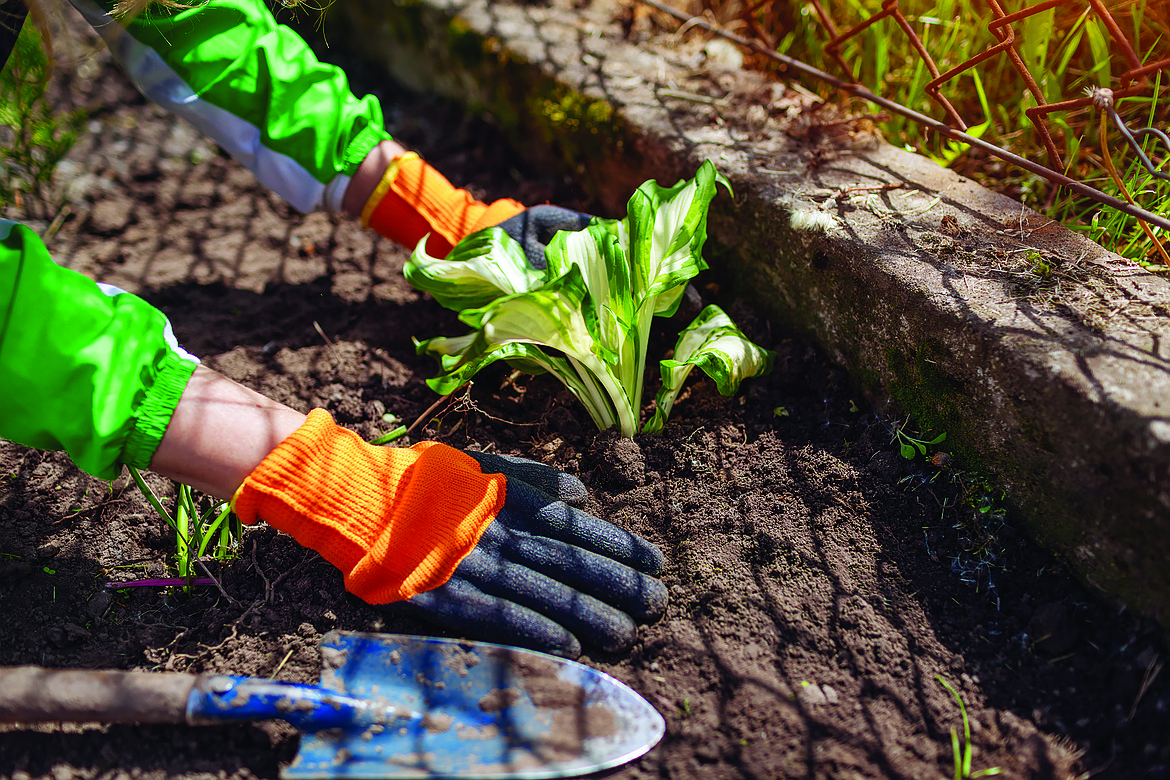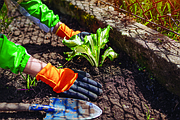Time is now to transplant perennials, ornamentals
With harvest underway, fall garden-work beckons.
Frosts have begun and chores will speed up exponentially, and though a few things — taking in your tender plants like rosemary, etc. — must be done now or never, there’s still plenty of time even into November (if the weather holds), to accomplish the remaining things you want to do.
Once you’ve finished the planting and transplanting of bulbs, corms, tubers and such, select the plants you want to divide and replant or transfer to another site, Be sure they are finished blooming or bearing fruit, then get the new site ready.
First, prepare the planting holes, give them a good drink of water, place a little mulch at the bottom to welcome the traumatized new roots and then begin digging up your chosen transplants. There is a proper way to do this: Place your shovel at the outer side of where the leaves or stems reach and dig straight down, then inward to get all of the roots, encircling the plant entirely.
With your gloved hands reach underneath the rootball, gently gathering and lifting it loose. Clean up any dead stems or leaves, and make sure the bottom of the ball is not root-bound — pulling and sorting the rootlets loose if necessary. If you wish to divide the plant, now’s the time: use a sharp cutting knife between stems, pulling gently apart into two or more plants.
Take them to the prepared holes, assure good soil/mulch coverage and tuck in securely. Water well, and you’re done! Do NOT add fertilizer — it will only spark them into growth mode which will thwart oncoming dormancy. This is what your compost is for; it will nourish them, keep them warm and lead them into gentle dormancy while giving them the nourishment they need to get through the winter.
Once again I must pass on my annual warning — important for those who are planning on installing shrubs. About six years ago, after a doe became disoriented and dangerously aggressive after browsing on the very toxic Japanese Yew (Taxus custidata) in a local garden — sometimes sold as Japanese Spreading Yew — this column reported on its dangers. Research on the popular ornamental shrub proved it to be deadly to browsers such as deer, moose and elk — and dangerous to have at hand even in non-animal surroundings, since the attractive red berries can entice youngsters to pluck and eat them.
Following that incident, a ranger at the Idaho Department of Fish and Game office at Coeur d’Alene recommended that people with the dangerous plants remove them — or at least cover them with burlap to discourage foragers. If you’re in the market for ornamental yew, talk to your nursery person and purchase ONLY the native Pacific Yew (Taxus brevifolia), which is perfectly safe for use. It should be planted to replace the Japanese yew. However, if you replace the toxic plants with safe ones, don’t replant into the old, contaminated holes. Start over with new holes and continue as described earlier in this column.
Nursery owners reading this should consider returning or disposing of their toxic stock — if any — and notify suppliers of the problem.
A final caution for your entire ornamental and veggie gardens is to make sure everything is still receiving enough water. If the fall rains come — great! But remember that adequate water is something late veggies and perennial plants need right into dormancy! Many fruiting shrubs and small trees– from plums (which need a nice frost to come to fruition) to the current squash and pumpkin crops — need that water to successfully mature.
Another annual reminder is actually a work-saver. During fall clean-up, many people like to prune, but it’s best to wait until spring. Pruning is actually another growth-enhancer; encouraging shrubs to put out new stems, buds, and leaves. However, cutting away deadwood, crossed branches — and importantly, dead rose and raspberry canes and suckers on fruit trees is an important chore. But take care; cutting into live wood now could leave the wounds open to bugs and diseases, so leave the real pruning until spring, when the pruners’ sharp cutters will encourage a spurt of growth when it’s wanted and needed.
You may deadhead roses, or if they have large hips, simply pull away dying petals and leave the bright hips for winter color and welcome bird forage. Pull away dead or diseased leaves, and rake well under them and all your shrubs and small trees, replacing with healthy fallen leaves and/or fresh clean mulch.
Valle Novak writes the Country Chef and Weekend Gardener columns for the Daily Bee. She can be reached at bcdailybee@bonnercountydailybee.com. or by phone at 208-265-4688 between the hours of 8 a.m. to 7 p.m.





